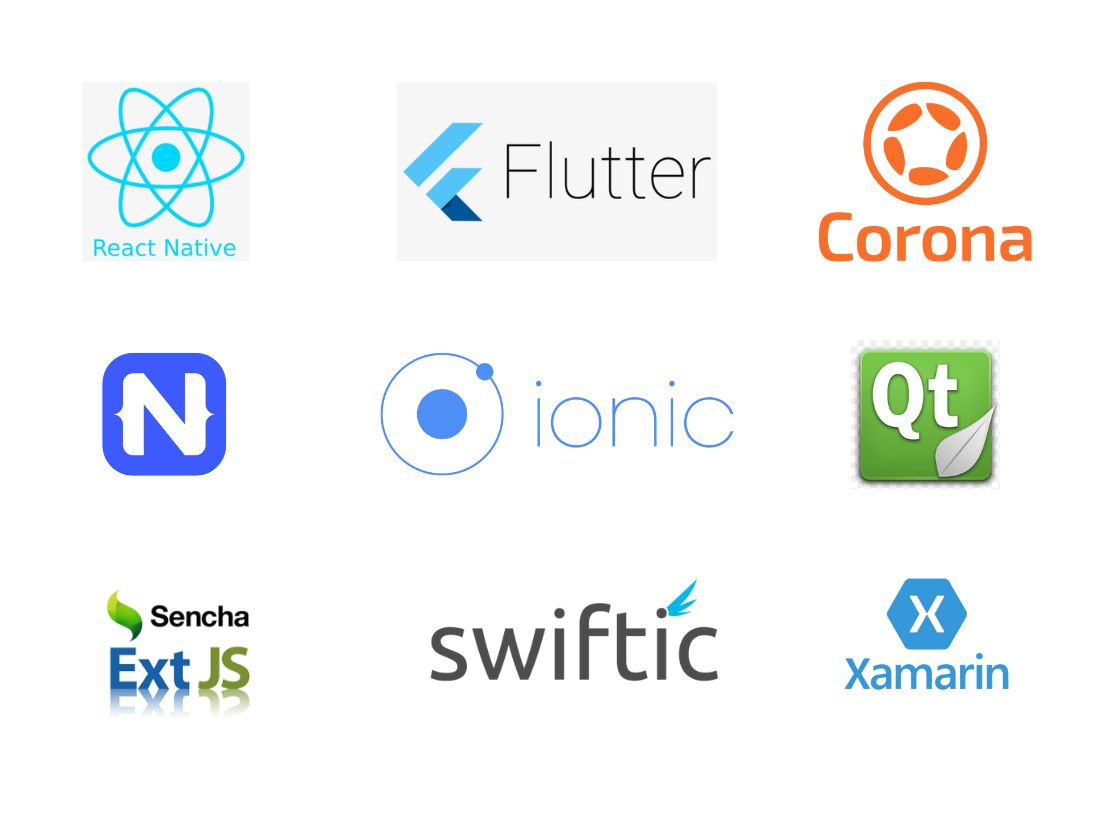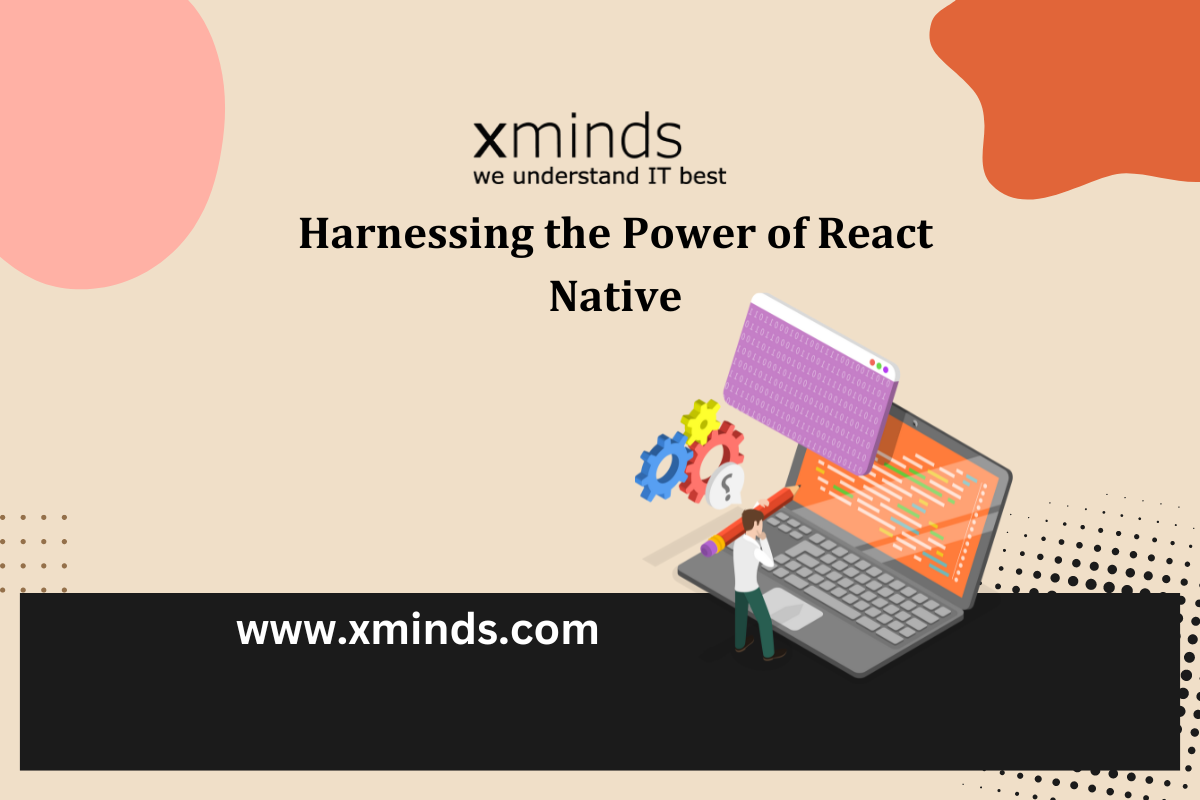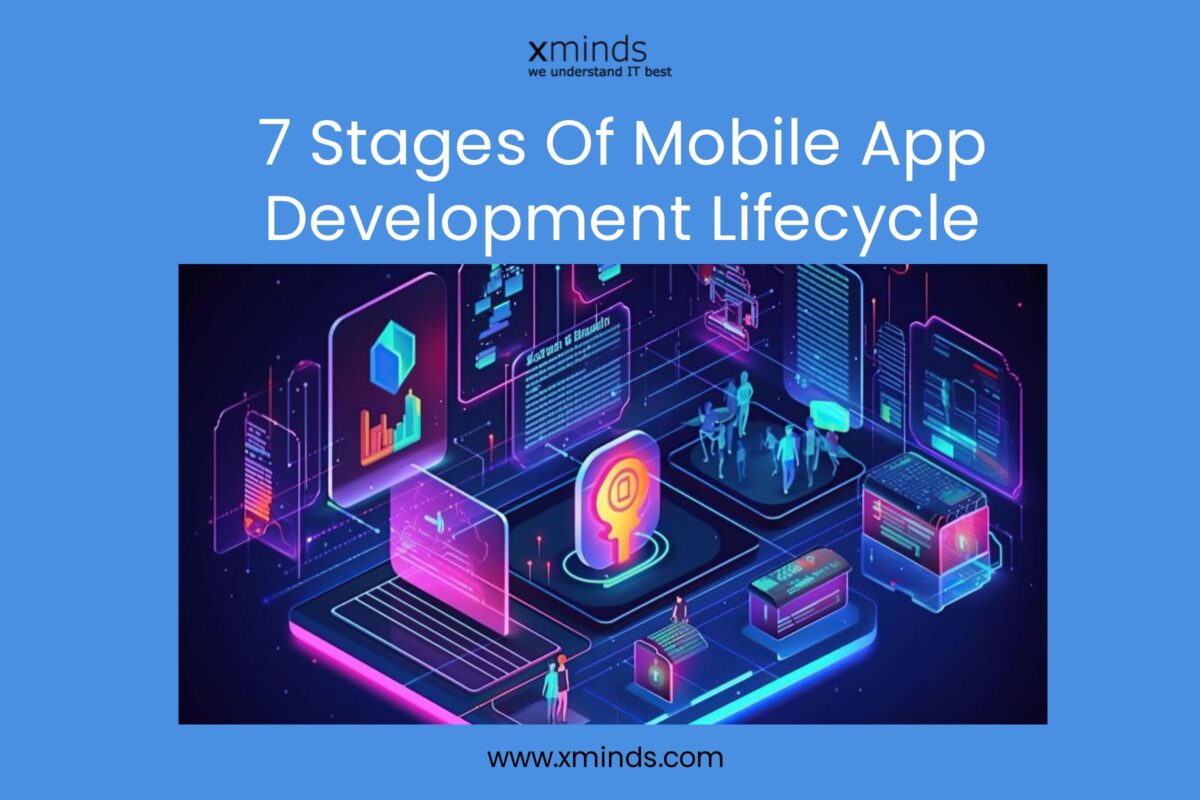Top 9 Mobile App development frameworks in 2023

Mobile app development frameworks provide a set of tools and libraries that allow developers to build mobile applications faster and more efficiently. These frameworks often include a range of features such as UI libraries, testing tools, and cross-platform compatibility, making it easier for developers to create high-quality apps that work on multiple devices and operating systems.
What is a mobile app development framework?
A mobile app framework is a software platform that provides a set of tools and libraries for developing mobile applications for a specific operating system. It typically includes a collection of pre-written code, libraries, and development tools that allow developers to create mobile apps more quickly and efficiently.
Mobile app frameworks are designed to provide a common set of features and functionality that can be used across a wide range of applications. This includes features such as user interface elements, database management, networking, and other common features that are needed in many mobile apps. By using a mobile app framework, developers can focus on building the specific features and functionality of their app, rather than having to write code from scratch for every aspect of the app.

Here are the top 9 mobile app development frameworks:
React Native
React Native is a popular choice for building cross-platform mobile apps developed by Facebook. It allows developers to use the same codebase to build apps for both iOS and Android, reducing the time and effort required for the development.
Some key features of React Native include:
- Cross-platform compatibility: React Native allows developers to build applications that work on both iOS and Android, using a single codebase.
- Performance: React Native applications are compiled to native code, which means they can run as fast as native applications.
- Reusable components: React Native uses a declarative style of programming, which allows developers to create reusable components that can be easily shared across different applications.
- Live reload: React Native has a feature called “live reload” which allows developers to see changes they make in the code immediately in the app, without the need to manually rebuild the app.
- Strong developer community: React Native has a large and active developer community, which means there is a wealth of resources and support available for developers who are learning the framework or building applications with it.
Flutter
Flutter is an open-source framework developed by Google that allows developers to build cross-platform apps for Android, iOS, web, and desktop. It features a fast development cycle, hot reloading, and a wide range of customizable widgets.
Some key features of Flutter include:
- Fast development: Flutter’s “hot reload” feature allows developers to see changes they make in the code immediately in the app, without the need to manually rebuild the app. This makes it easy to iterate on designs and features quickly.
- Beautiful, customizable widgets: Flutter comes with a wide range of customizable widgets that make it easy to build beautiful and responsive user interfaces.
- Cross-platform compatibility: Flutter allows developers to build applications for both Android and iOS from a single codebase.
- Native performance: Flutter applications are compiled to native code, which means they can run as fast as native applications.
- Strong developer community: Flutter has a large and active developer community, which means there is a wealth of resources and support available for developers who are learning the framework or building applications with it.
Xamarin
Xamarin is a Microsoft-owned framework that allows developers to build cross-platform apps using C#. It offers a range of tools and libraries for building native apps for iOS, Android, and Windows, and it integrates with Visual Studio for easy development.
Some key features of Xamarin include:
- Cross-platform compatibility: Xamarin allows developers to build applications that work on multiple platforms using a single codebase, saving time and effort.
- Native performance: Xamarin applications are compiled to native code, which means they can run as fast as native applications.
- Reusable code: Xamarin allows developers to share up to 90% of their code across different platforms, making it easier to maintain and update applications.
- Integrated development environment: Xamarin includes an integrated development environment (IDE) called Visual Studio, which provides a range of tools and features for building and debugging applications.
- Strong developer community: Xamarin has a large and active developer community, which means there is a wealth of resources and support available for developers who are learning the platform or building applications with it.
Swiftic
Swiftic is a mobile app development platform that allows businesses and organizations to create custom native mobile applications for iOS and Android. It provides a range of tools and features for building and managing mobile applications, including a drag-and-drop interface for building app layouts, pre-designed templates and themes, and integration with social media and other external services.
Some key features of Swiftic include:
- Easy app creation: Swiftic provides a user-friendly interface and a range of templates and themes to help businesses and organizations create custom mobile applications quickly and easily.
- Customization options: Swiftic allows users to customize their applications with their own branding, content, and features, including integration with social media and other external services.
- Marketing and analytics tools: Swiftic provides a range of tools for marketing and analyzing user behaviour, including push notifications, in-app messaging, and analytics tracking.
- Support for multiple languages: Swiftic supports multiple languages, allowing users to create applications that are accessible to a global audience.
- Strong customer support: Swiftic offers a range of resources and support options, including a knowledge base, video tutorials, and dedicated customer support.
Ionic
Ionic is an open-source framework for building hybrid mobile apps using web technologies such as HTML, CSS, and JavaScript. It allows developers to build apps that work on multiple platforms with a single codebase, and it includes a range of UI components and tools for testing and deployment.
Some key features of Ionic include:
- Cross-platform compatibility: Ionic allows developers to build applications that work on multiple platforms using a single codebase, saving time and effort.
- Reusable components: Ionic uses a component-based architecture, which allows developers to create reusable components that can be easily shared across different applications.
- Strong developer community: Ionic has a large and active developer community, which means there is a wealth of resources and support available for developers who are learning the framework or building applications with it.
- Native functionality: Ionic applications can access native device features such as the camera, GPS, and push notifications using Cordova plugins.
- Responsive design: Ionic comes with a range of responsive design elements that make it easy to build applications that look great on all devices.
NativeScript
NativeScript is a framework that allows developers to build native mobile apps using Angular, Vue.js, or TypeScript. It offers a range of features for building high-performance apps, including a rich set of UI components and support for offline functionality.
Some key features of NativeScript include:
- Cross-platform compatibility: NativeScript allows developers to build applications that work on multiple platforms using a single codebase, saving time and effort.
- Native performance: NativeScript applications are compiled to native code, which means they can run as fast as native applications.
- Reusable components: NativeScript uses a component-based architecture, which allows developers to create reusable components that can be easily shared across different applications.
- Strong developer community: NativeScript has a large and active developer community, which means there is a wealth of resources and support available for developers who are learning the framework or building applications with it.
- Native APIs: NativeScript provides access to native device APIs and features, such as the camera, GPS, and push notifications, using a set of built-in plugins.
Sencha Ext JS
Sencha Ext JS is a JavaScript framework for building interactive web applications. It provides a wide range of features for building rich and responsive user interfaces, including a set of UI components such as grids, trees, forms, and charts, as well as a powerful data package that enables you to manage and manipulate large datasets.
Some key features of Sencha Ext JS include:
- A rich set of UI components: Ext JS includes a wide range of UI components, including grids, trees, forms, charts, and more, that can be easily integrated into your application.
- Advanced data management: Ext JS includes a powerful data package that enables you to manage and manipulate large datasets. It also includes features such as sorting, filtering, and paging to help you work with your data more efficiently.
- Responsive design: Ext JS is designed to work across a wide range of devices and screen sizes, including desktop, tablet, and mobile. It includes responsive design features that allow you to build applications that work seamlessly across different devices.
- Easy to use and maintain: Ext JS is designed to be easy to use and maintain, with a clean and intuitive API and a number of tools and resources to help you develop your applications quickly and efficiently.
Corona SDK
Corona SDK is a framework for building 2D mobile apps and games for iOS, Android, and Amazon devices. It includes a range of tools and libraries for building high-performance apps, including a powerful graphics engine and support for a wide range of media formats.
Some key features of Corona SDK include:
- Cross-platform compatibility: Corona SDK allows developers to build applications that work on multiple platforms using a single codebase, saving time and effort.
- Fast development: Corona SDK includes a “live testing” feature that allows developers to see changes they make in the code immediately in the app, without the need to manually rebuild the app.
- Native performance: Corona SDK applications are compiled to native code, which means they can run as fast as native applications.
- Strong developer community: Corona SDK has a large and active developer community, which means there is a wealth of resources and support available for developers who are learning the platform or building applications with it.
- Native functionality: Corona SDK provides access to native device features such as the camera, GPS, and push notifications using a set of built-in plugins.
QT
QT is a cross-platform application framework that is widely used for developing application software with a graphical user interface (GUI) (in which cases Qt is classified as a widget toolkit), and also used for developing non-GUI programs such as command-line tools and consoles for servers.
Some key features of Qt:
- Cross-platform compatibility: Qt can be used to develop applications for various platforms, including Windows, macOS, Linux, Android, iOS, and others. This makes it a very convenient tool for creating applications that need to run on multiple platforms.
- GUI development: Qt provides a wide range of GUI widgets and layout management tools that allow developers to create visually appealing and user-friendly applications. It also includes support for graphics, animations, and other graphical effects.
- Powerful and efficient: Qt is known for its efficiency and performance, making it a good choice for developing resource-intensive applications. It also includes various tools and libraries for optimizing the performance of applications, such as a just-in-time compiler and a memory management system.
- Extensive documentation and support: Qt has extensive documentation and a large community of developers, making it easy to find help and guidance when using the framework. It also has a number of commercial and community-supported tools and services that can help developers with tasks such as testing, debugging, and deployment.
- Multiple programming languages: Qt can be used with a number of programming languages, including C++, Python, and QML (a declarative language for designing user interfaces). This allows developers to choose the language that best fits their needs and expertise.

Conclusion
Mobile app frameworks are a crucial aspect of modern app development, as they provide a set of tools and libraries that can help developers create high-quality and feature-rich applications efficiently. There are many different mobile app frameworks available, each with its own set of features and capabilities.
In conclusion, when choosing a mobile app framework for your project, it’s important to consider the specific needs and goals of your project, as well as the platform and programming language you will be using. Some popular options include React Native, Flutter, and Xamarin, but there are many others to choose from as well. Regardless of which framework you choose, it’s important to thoroughly research and evaluate your options to ensure that you select the one that best fits your needs.
Now is the time to turn your idea into an app!
Now that you have a better understanding of mobile app frameworks and their importance in app development, it’s time to start thinking about how to bring your app idea to life. If you’re looking for a reliable and experienced app development company to help you bring your vision to fruition, look no further!
Our team at Xminds specializes in creating top-quality mobile apps using a variety of frameworks and technologies. We have a track record of delivering successful projects for a diverse range of clients, and we would be thrilled to help bring your app idea to life.
Whether you have a clear idea of what you want your app to do or you’re just starting to explore the possibilities, our team can help you every step of the way. From concept development and prototyping to design and deployment, we have the skills and expertise to make your app a success. Contact us today to learn more about how we can help bring your app idea to life!
Related articles



